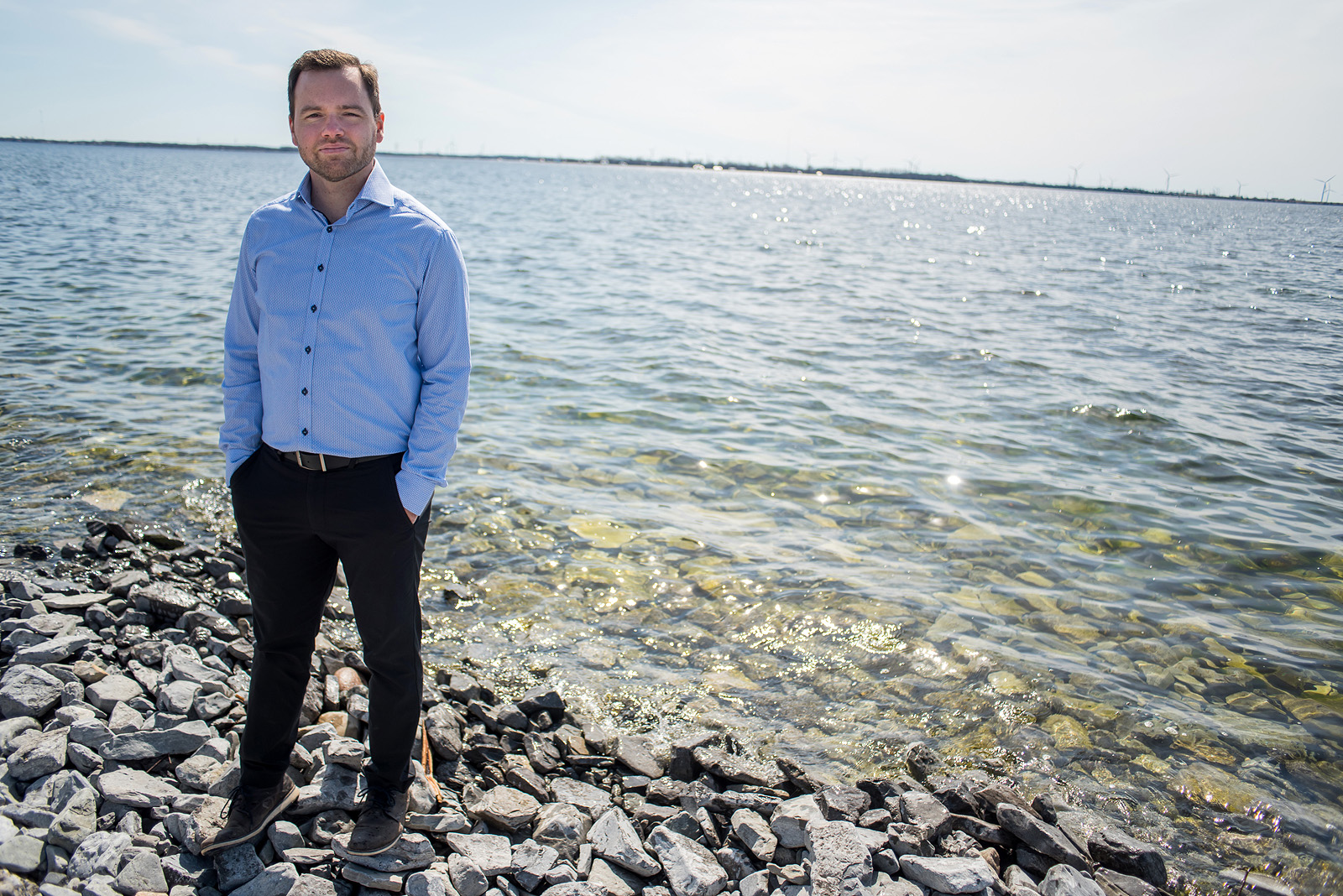“I’ve always been excited to solve a puzzle,” says Jason Olsthoorn, the faculty’s newest Assistant Professor in Civil Engineering. “I especially love board games, because I love that within a certain framework there's always a strategy, and you're always dealing with other people.”
The puzzle Olsthoorn is currently trying to solve has a gigantic surface area.
“I model the physical processes that mix up the world’s lakes and oceans,” he says. It’s a field of study that he has been pursuing for a long time, first in the abstract and now in a more practical manner.
Born and raised in Montreal, Olsthoorn earned undergraduate and master’s degrees in mathematics from University of Waterloo. He then moved to the U.K. to complete his PhD at University of Cambridge.
He was a postdoctoral research fellow at the University of British Columbia for four years before joining Queen’s at the beginning of 2022. “I was always interested in physics and mathematics in high school,” he explains, when asked about his academic background. “My family is very proud of what I’ve achieved,” he says, with a modest smile. “There’s a caveat. They don’t really know what I do, and it’s very hard to explain it to them. Especially my grandmother!”

But if he were to attempt an explanation, Olsthoorn would settle upon the example of a big Canadian lake. “There are many ways you can mix up a lake, right? The first one that comes to mind is the obvious one, wind. It blows on the surface of a lake and that drives a certain amount of turbulence that mixes things up.”
“Now imagine a cold summer’s night.”
The difference in temperature between surface level and the depths of the lake result in convection. “My research interest in particular is regarding how much these physical processes mix up a body of water.”
Olsthoorn is hoping to explore the subject in greater detail by developing prototype facilities that are able to both mix water at the surface level through wind induced turbulence, as well as incorporating surface driven convection.
“It’s really about figuring out how we can actually model it in a lab without having to go to these very large facilities or into the field, because the bigger the scale of things, the harder it gets to measure it as accurately.”
“If we want to change the world,” Olsthoorn says, “we really have to worry about our freshwater resources.” He encourages graduate students interested in his field to regularly check the department website since there are often new postings.
Olsthoorn is excited about the work ahead of him at Queen’s. “We interact with lakes a lot as Canadians,” he explains. People depend on lakes for drinking water, for cultural activities, and commerce.
“We have a lot of interaction with lakes, and not just in terms of climate change. But also in terms of, for example, the microplastics we are putting into the water. So where does that stuff go? If we’re heating up the water, where is the heat going? Where’s the plastic going?”
Olsthoorn is not only aware of the challenges facing his field but seems to be reassured by them. “If you think about the Great Lakes,” he says, “how many temperature measurements are being taken in the Great Lakes? I don't know the answer to that question, but it's only going to cover a small portion of the lake!”
“So in order to really understand what practical kind of solutions can be drawn up, you have to really understand the limitations that people in the field are dealing with. And when you realize the framework that you're coming into, it actually liberates you to think: okay, this is what I actually have to deal with.”
In other words, Jason Olsthoorn is playing a puzzle game. The objective: to figure out how water moves in lakes and oceans.
